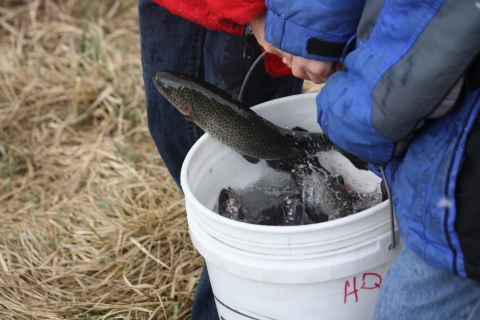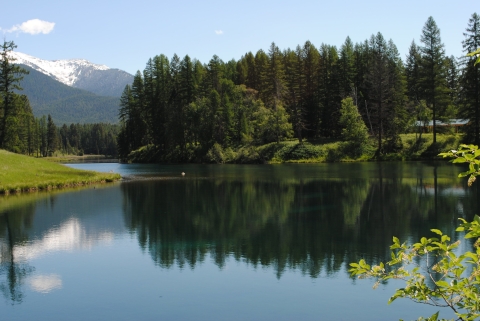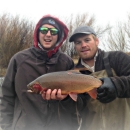About Us
Since 1871 the National Fish Hatchery system has been at work improving recreational fishing and restoring aquatic species that are in decline, at risk, and are important to the health of our aquatic systems. Across the country the network of National Fish Hatcheries work with states and tribes to conserve, restore and enhance the fish and aquatic resources of America for future generations.
Established in 1939, Creston NFH originally provided fingerling trout for Glacier National Park. Today, the hatchery has five main objectives:
- Tribal Trust stockings for fishery management activities on the seven Tribal Reservations in Montana.
- Stock fish for mitigation purposes under the Hungry Horse Dam Fishery Mitigation Plan.
- Provide fish for native fish restoration activities.
- Produce trout for cooperative fish management programs with Montana Fish, Wildlife, and Parks.
- Provide fish for science based educational programs, outreach events and for kids fishing ponds throughout NW Montana.
Our Mission
National fish hatcheries apply science-based approaches to conservation challenges. We work with our partners and engage the public to conserve, restore, and enhance fish and other aquatic resources for the continuing benefit of the American people. Conservation is at the heart of what we do, and we recognize that we do this work for the American people–both the present generation who benefit today and future generations who will inherit our legacy of conserving America’s aquatic resources.
Our History
The site for Creston National Fish hatchery was selected in 1935 by officials of the National Park Service after consultation with the various authorities on fish propagation and extensive study and investigation of other possible alternative sites. In December of 1935, on option was taken on the Jessup Mill Property for the NPS by "interested friends of the agency." Legislation authorizing the purchase was initiated in Congress on Sept. 26, 1936 and on January 17, 1939 the deed was transferred from the Dakota and Great Northern Townsite Company (a subsidiary of the Great Northern Railway) to the National Park Service. Construction on the Glacier Park Fish Hatchery was completed in 1940 with a labor force hired by the Works Progress Administration. In 1944 ownership of the hatchery was transferred from the NPS to the U.S. Bureau of Sports Fisheries and Wildlife.
Over the course of the last 75 years, the Creston hatchery program has gone through several "eras" of change. In the early years the primary program was cutthroat trout broodstock broodstock
The reproductively mature adults in a population that breed (or spawn) and produce more individuals (offspring or progeny).
Learn more about broodstock development and production, with emphasis on the stocking of waters in Glacier National Park, a practice that was gradually reduced until 1971 when the stocking of Glacier National Park ceased. For a brief period (1967-1971) the primary emphasis shifted to broodstock development and production of native westslope cutthroat trout, but the program was short-lived. In the early 70’s the fish production emphasis changed to stocking Montana’s seven Indian Reservations. For a decade, between 1983 and 1992, the station was also involved in the maintenance of various broodstocks and the production of Eagle Lake rainbow trout eggs for export to other hatcheries. In 1993, another era was ushered in with the advent of mitigation for Hungry Horse Dam and the rearing of kokanee salmon for Flathead Lake. Also associated with the Hungry Horse Dam Fishery Mitigation Plan was the development of a groundbreaking bull trout broodstock propagation program. Creston was the first and only USFWS hatchery to rear the endangered bull trout.



